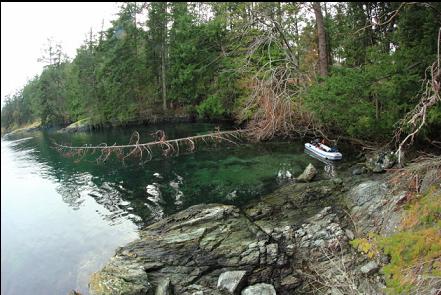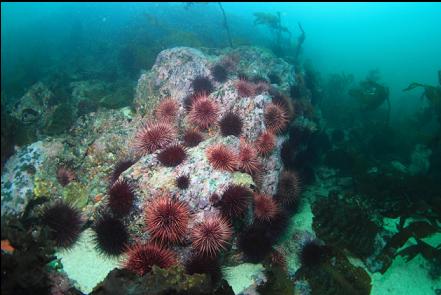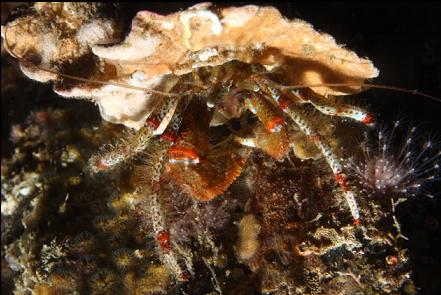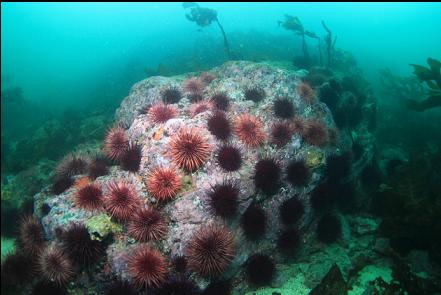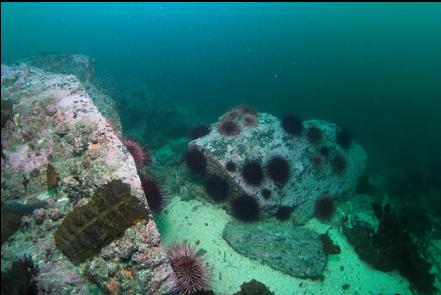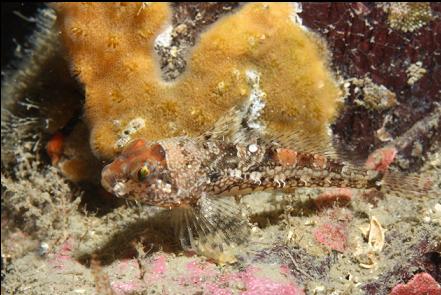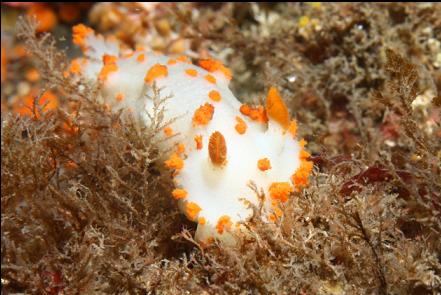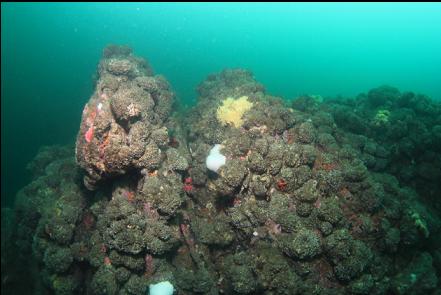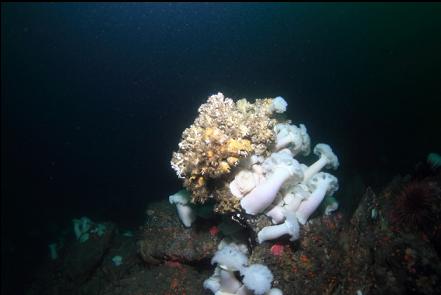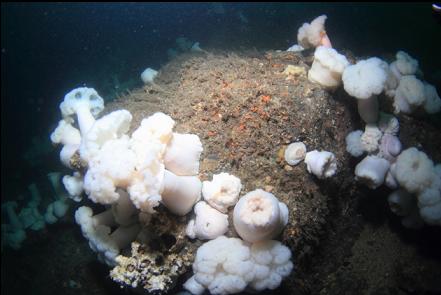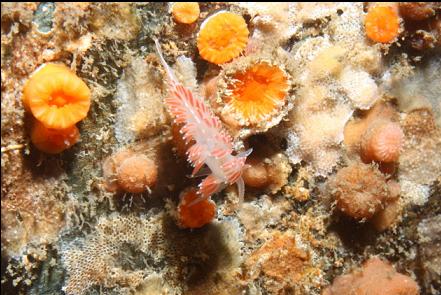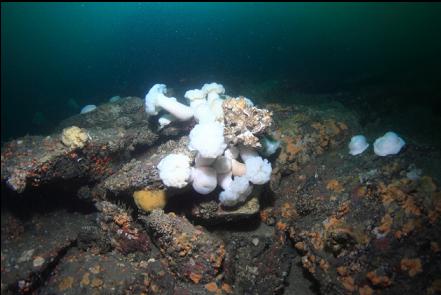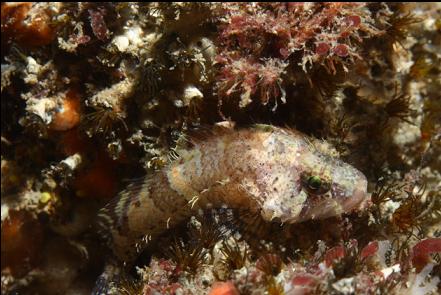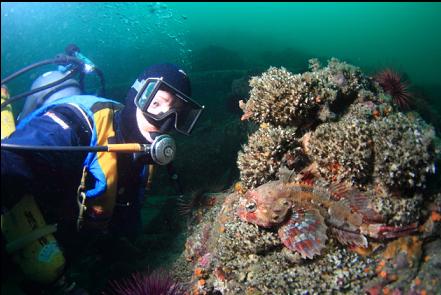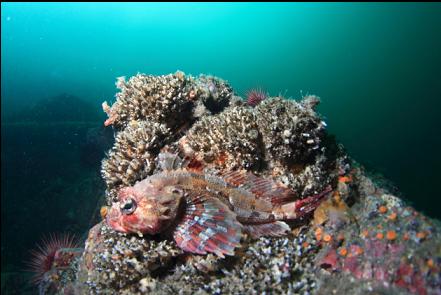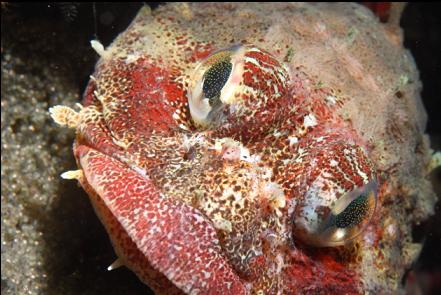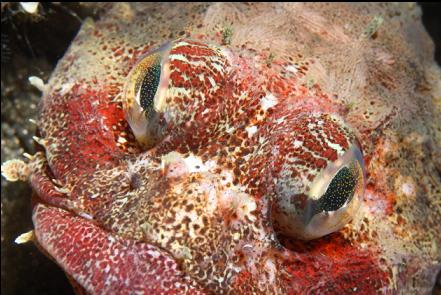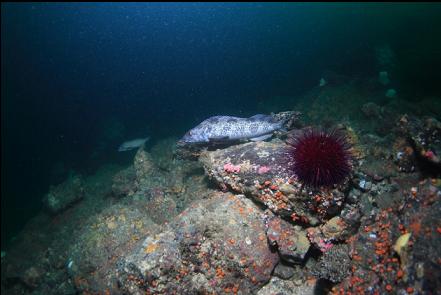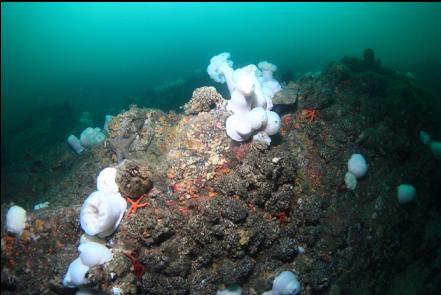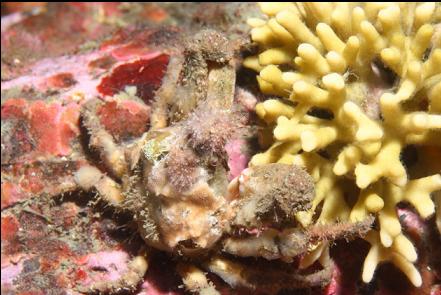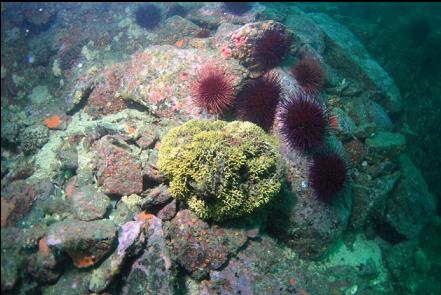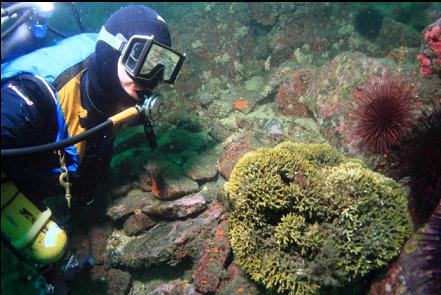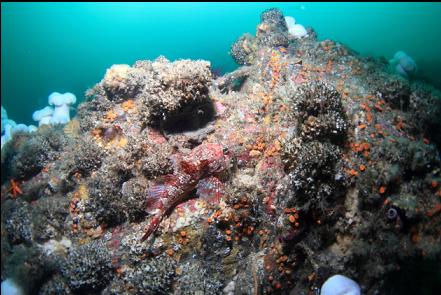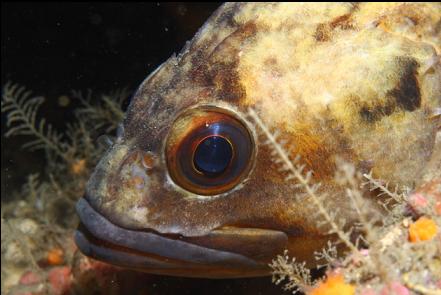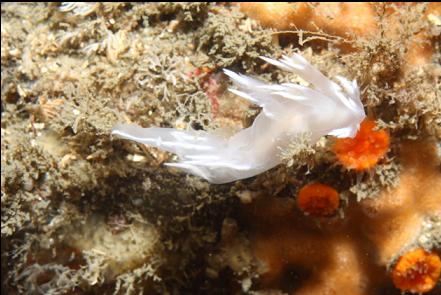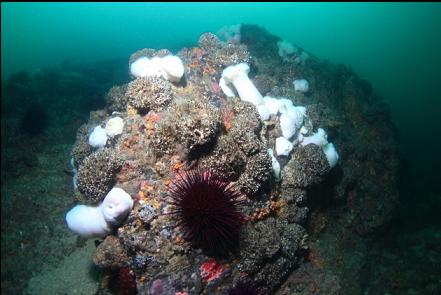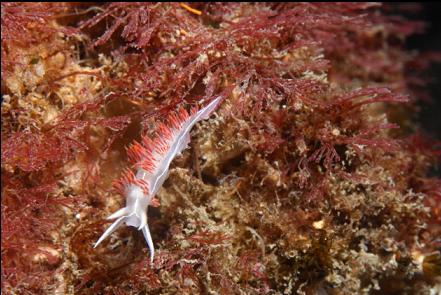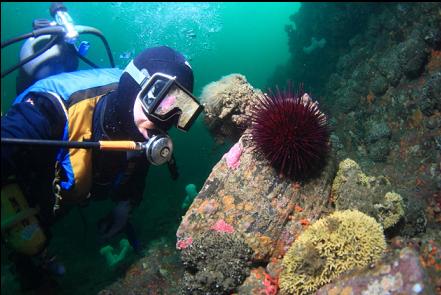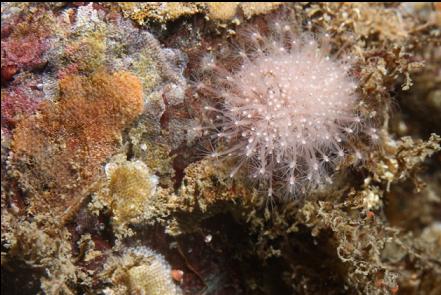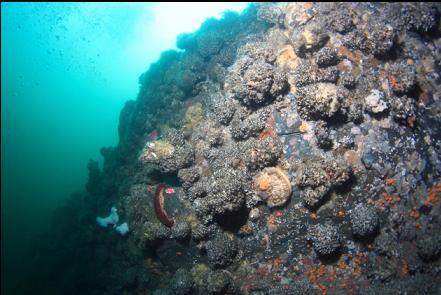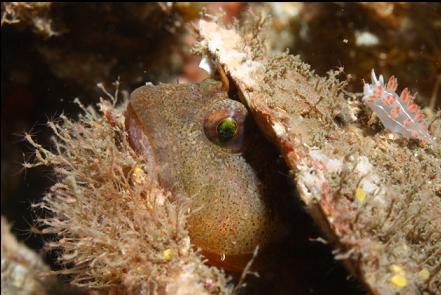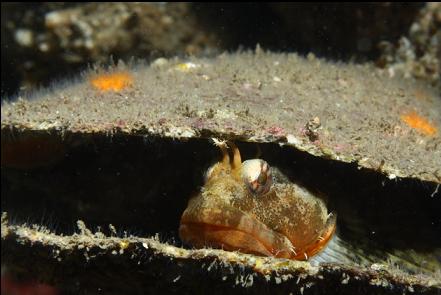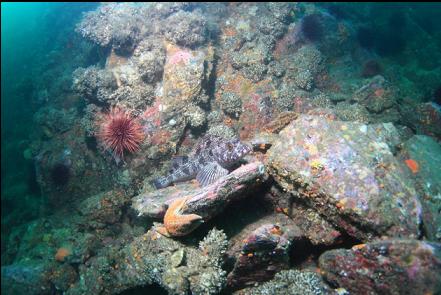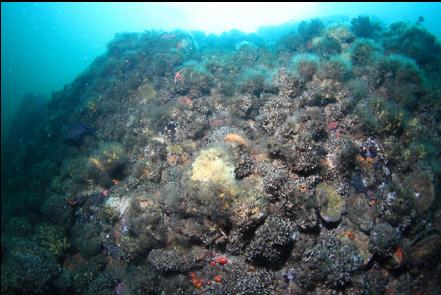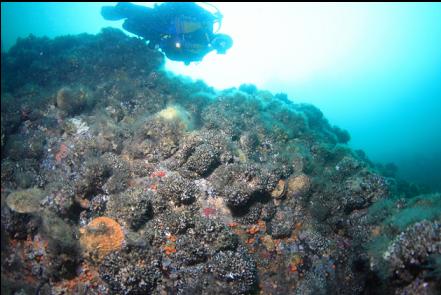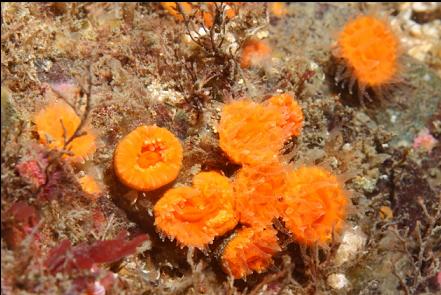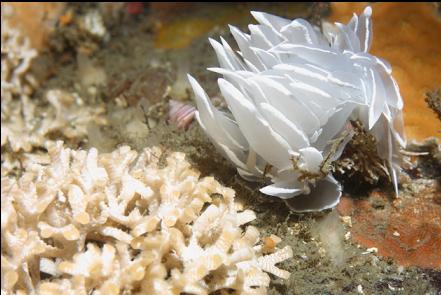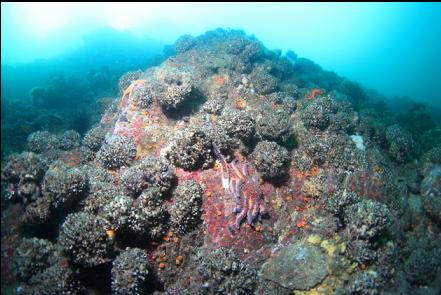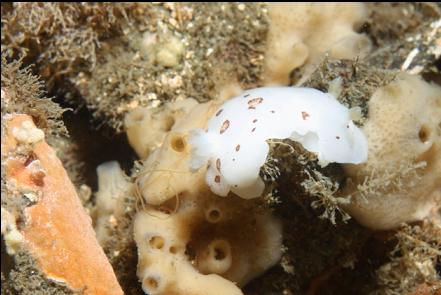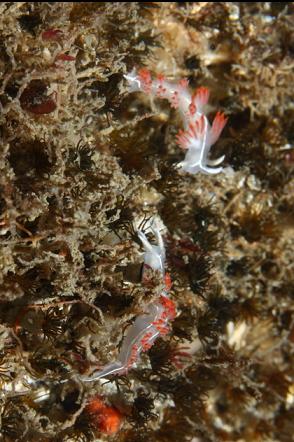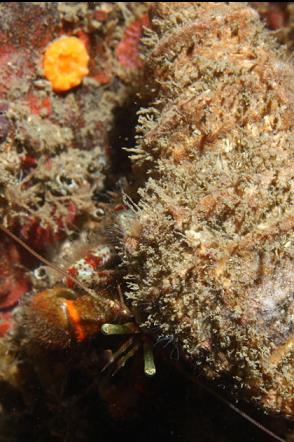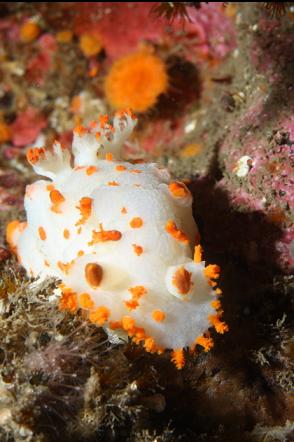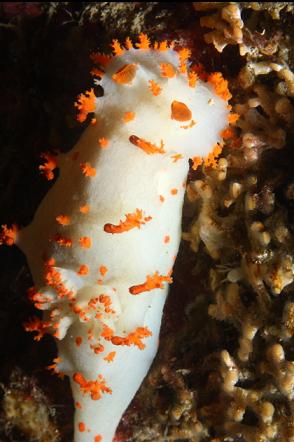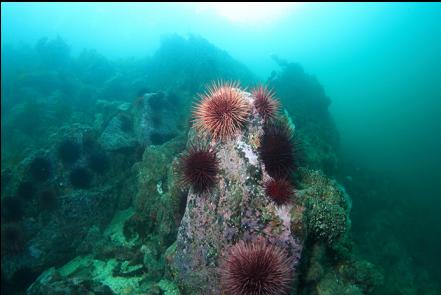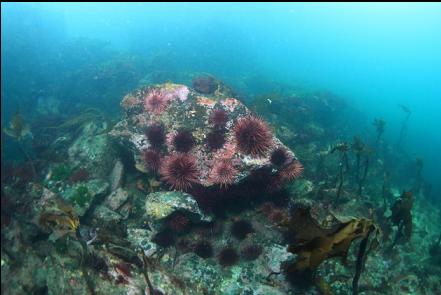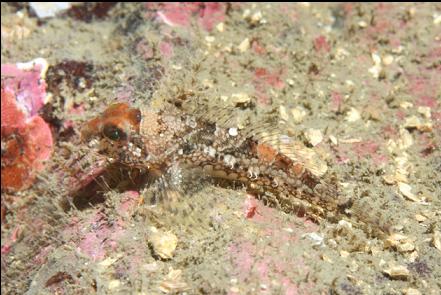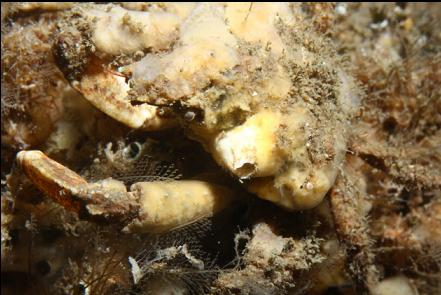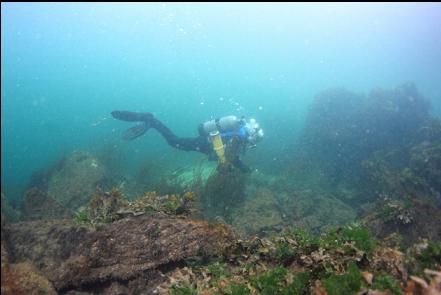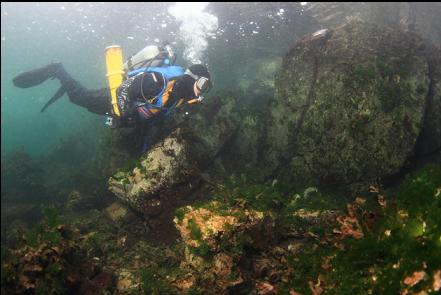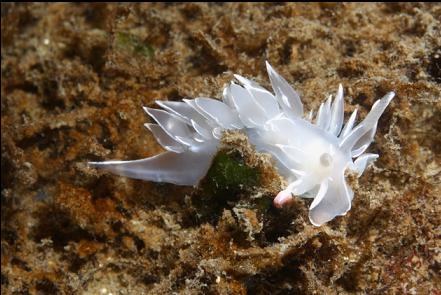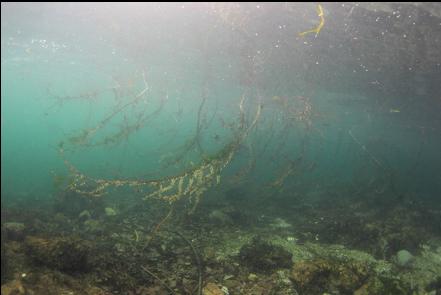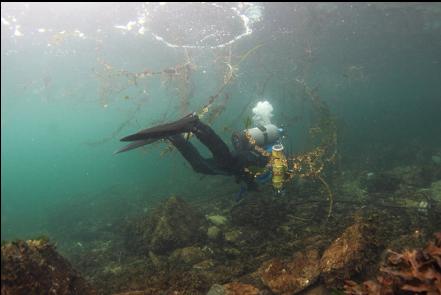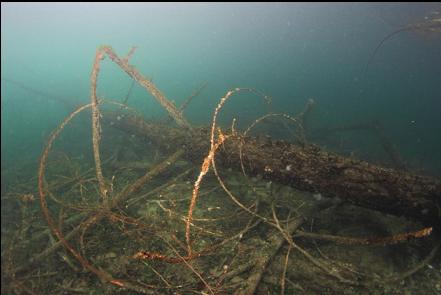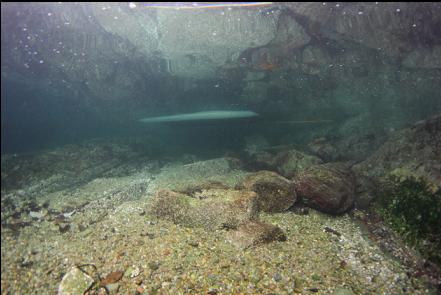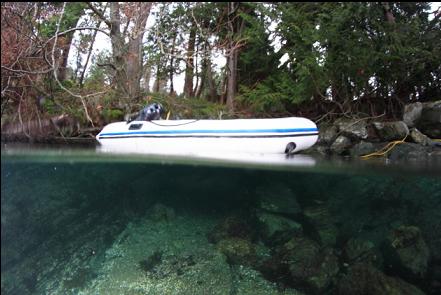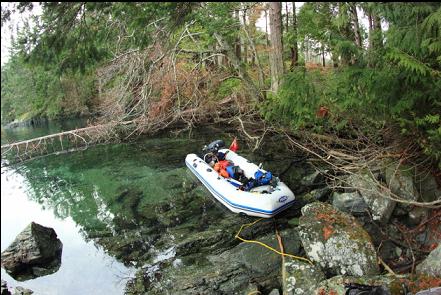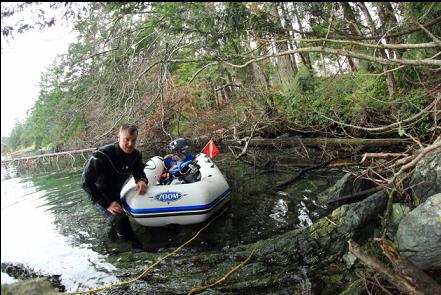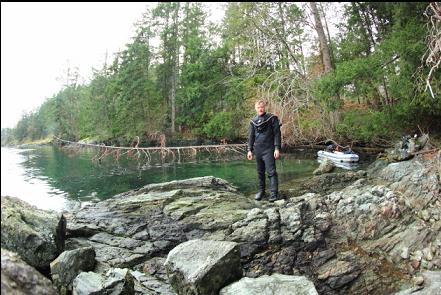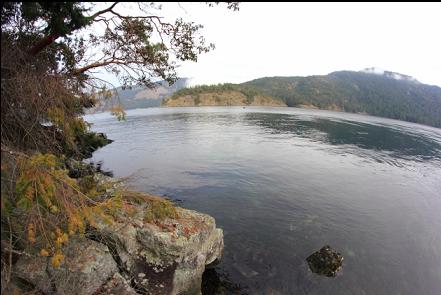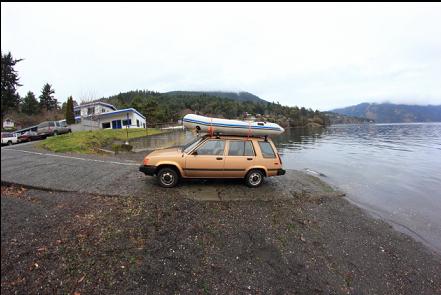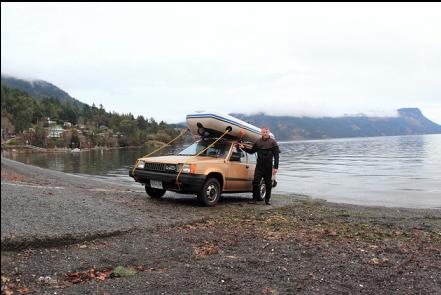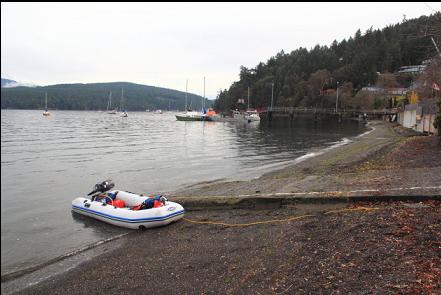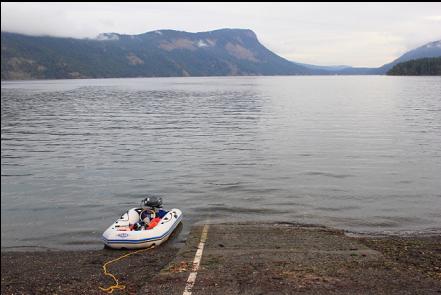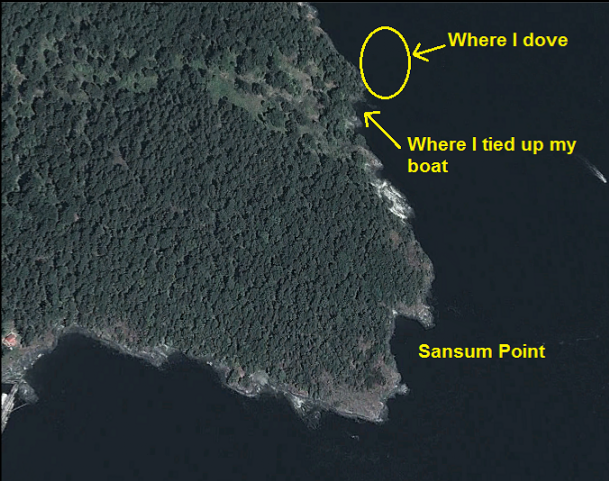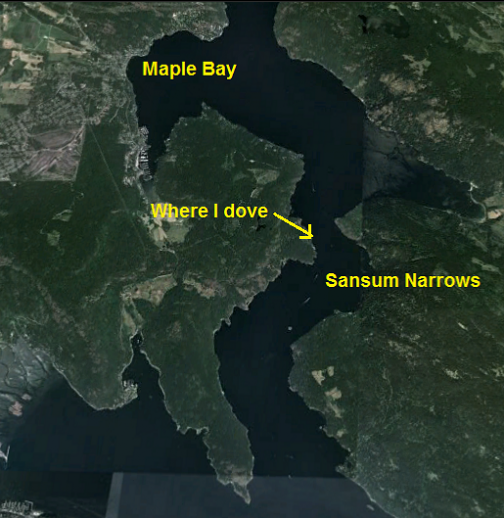I haven't done much diving in Sansum Narrows so far. It's one of those places where the current, the wind and the visibility all have to cooperate before I consider taking my boat out. It's also just far away enough from Victoria to make me think twice about the drive up. I was just in the area (not diving) recently and the visibility near shore in both Maple Bay and Genoa Bay (both ends of Sansum Narrows) looked better than I'd ever seen it. I checked the Sansum Narrows current table for the next day and it showed a maximum flood of only 1.5 knots in the morning. I drove up with my boat on the roof (Dec. 29, 2013) and launched at the public ramp in Maple Bay. I decided to dive at a spot about 350 meters North of Sansum Point where some charts showed a kind of shallower area sticking out slightly before dropping steeply into the narrows. I hoped that this "fingernail reef" would stick out enough to be exposed to the main flow of current. The spot was also located in the narrowest part of Sansum Narrows, where the current should be at its strongest. I wanted to see what the marine life in the "currentiest" area in the narrows would look like. I tied my boat to a rock in a small bay and swam North. I didn't see any sealions during the dive, but as I was getting ready in the bay, 2 large Steller's sealions just outside the bay were snorting and sticking up their heads to see what I was. I was diving when the current table was showing maximum flood, but the water was already ebbing. I convinced myself that the unexpected direction of flow was just because of a local back-eddy and swam down the slope. Visibility was 30-50', which is the best I've ever seen in this area. The slope was made up of boulders, small walls, rocky rubble and small patches of white sand. Around 20 feet deep there were lots of red urchins and cup corals. Deeper, the rocks were covered with clumps of cemented tube worms, more cup corals, plumose anemones, hydroids, small patches of yellow sponge and encrusting hydrocoral. In many places, I couldn't see the rock beneath the invertebrate carpet. I saw some yellow staghorn bryozoan colonies that were bigger than my head. There was a higher-than-average amount of small sculpins, nudibranchs and crabs (decorator, hermit, etc.). There weren't many fish (other than the tiny sculpins, but I did see a few rockfish (copper and brown), small lingcod, kelp greenlings, perch and Irish lords. I noticed that many of the seastars were dead and falling apart. This unusual seastar mortality has been reported recently all along the North American Pacific coast. The slope dropped quickly, but it wasn't a straight-down wall. I followed it down to about 90 feet deep. The current was almost too strong to swim against and it was getting stronger. It was too strong to try and take proper pictures so I just snapped a few of the plumose anemone-covered boulders and swam back up shallower. I didn't want to be caught down deep and far from shore when the current became stronger. According to the marine chart, this rocky area drops to almost 300 feet deep. I found some spots where an angled wall or a large boulder blocked the current so I could stop frantically swimming and take some close-up photos. There were lots of empty rock scallop shells stuck to the walls. Almost all of them had scalyhead sculpins living in them. The current was really picking up. The current table showed a maximum ebb of over 4 knots so I didn't want to be in the water for that. I let the flow drift me along in the shallows and I ducked back into the protection of the bay.
So far, this spot has the most concentrated coating of current-loving invertebrate life I've seen in Sansum Narrows. I'm sure the visibility here is usually worse and I don't trust the current tables anymore, but I'll have to try to come back here eventually.


